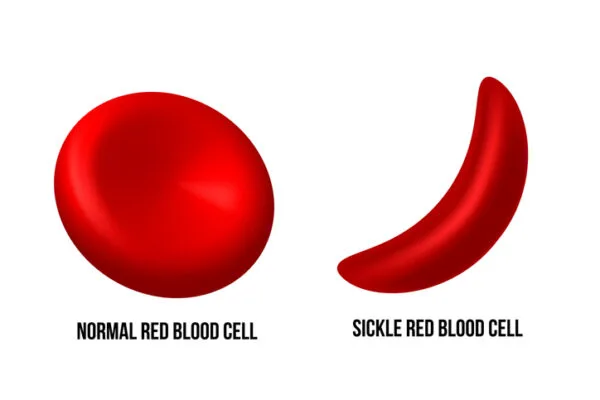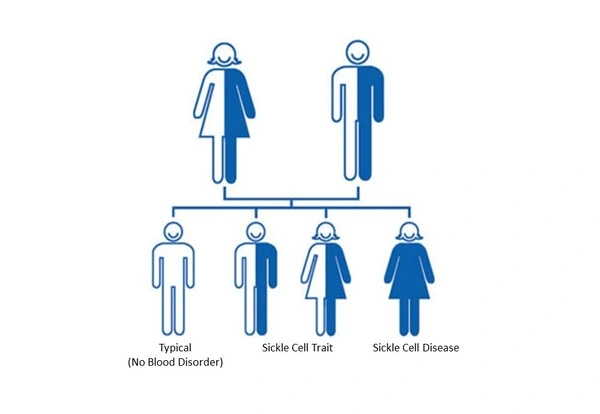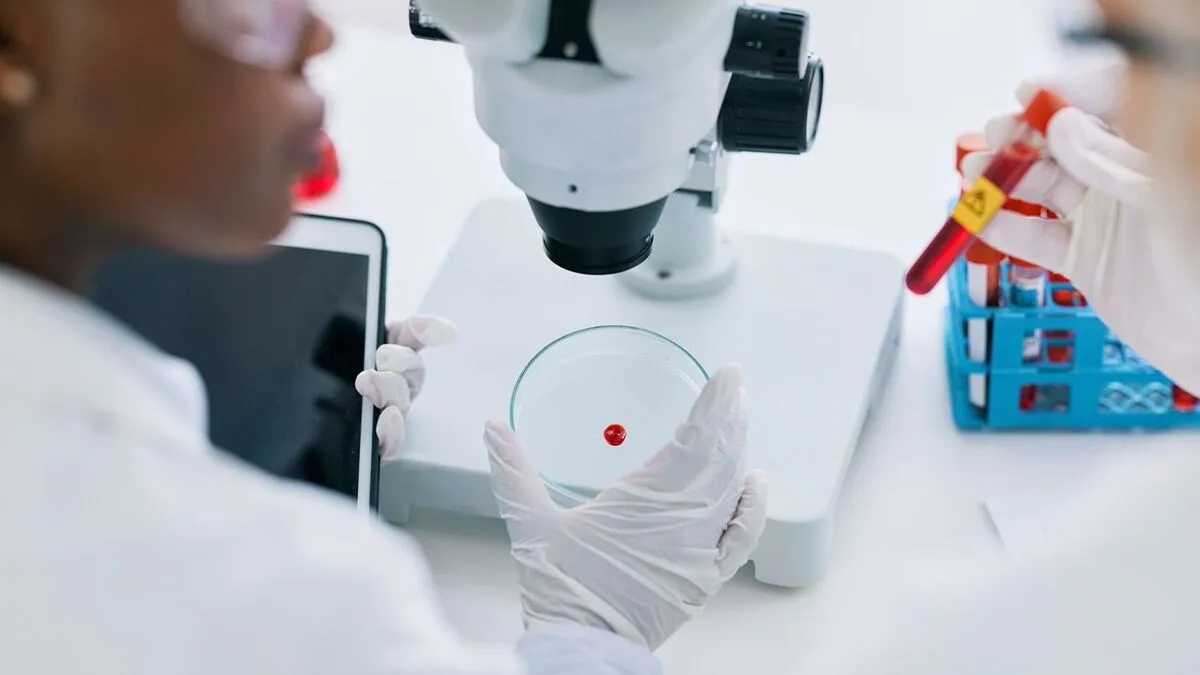The theme for World Sickle Cell Day 2024 is “Hope Through Progress: Advancing Sickle Cell Care Globally.” World Sickle Cell Day is observed on June 19 every year. It is an annual event that aims to raise awareness about sickle cell disease globally.
It is estimated that each year over 300 000 babies with severe forms of these diseases are born worldwide, the majority in low and middle income countries. Approximately 5% of the world’s population are healthy carriers of a gene for sickle-cell disease or thalassaemia. Now, let’s dive in and understand Sickle cell.
Sickle cell anemia is a hereditary blood disorder that falls under the broader category of sickle cell disease. This condition primarily affects the shape and functionality of red blood cells, which are responsible for transporting oxygen throughout the body. Normally, red blood cells are round and flexible, enabling them to move easily through blood vessels.
However, in sickle cell anemia, some red blood cells assume a rigid, crescent-like shape, akin to a sickle used in agriculture. These malformed cells are not only sticky but also prone to obstructing blood flow, leading to a multitude of health complications.

Causes of Sickle Cell Anemia
Sickle cell anemia is caused by a genetic mutation affecting hemoglobin, the iron-rich protein in red blood cells responsible for oxygen transport. This mutation leads to the production of abnormal hemoglobin known as hemoglobin S. For a child to inherit sickle cell anemia, both parents must carry one copy of the sickle cell gene and pass these on to their child. If only one parent passes on the gene, the child will have the sickle cell trait, producing both normal and abnormal hemoglobin, typically without symptoms but capable of passing the trait to offspring.
Symptoms and Complications
Symptoms of sickle cell anemia typically emerge around six months of age and can vary widely among individuals. Some of the common symptoms include:
1. Anemia: The abnormal sickle cells have a much shorter lifespan (10-20 days) compared to normal red blood cells (120 days), leading to a chronic shortage of red blood cells. This results in fatigue due to insufficient oxygen delivery to the body.
2. Episodes of Pain: Known as pain crises, these episodes occur when sickle-shaped cells obstruct blood flow through small blood vessels, causing severe pain that can last from a few hours to several days. Some individuals experience frequent crises, necessitating hospitalization.
3. Swelling of Hands and Feet: Blocked blood flow in the extremities can cause painful swelling.
4. Frequent Infections: Damage to the spleen from sickle cells reduces the body’s ability to fight infections, making individuals more susceptible, especially to pneumonia.
5. Delayed Growth and Puberty: The chronic shortage of red blood cells can slow growth and delay puberty in affected children and teenagers.
6. Vision Problems: Blockage of the tiny blood vessels in the eyes can damage the retina, potentially leading to vision issues.
Sickle cell inheritance pattern


Sickle cell anemia can also lead to numerous severe complications, including:
– Stroke: Blocked blood flow to the brain can cause strokes, characterized by seizures, weakness, sudden speech difficulties, and loss of consciousness.
– Acute Chest Syndrome: This life-threatening condition arises from lung infections or blocked blood vessels in the lungs, presenting symptoms such as chest pain, fever, and difficulty breathing.
– Avascular Necrosis: Lack of blood flow to bones, particularly the hip, can lead to bone death and joint damage.
– Pulmonary Hypertension: High blood pressure in the lungs, often affecting adults, can cause shortness of breath and fatigue.
– Organ Damage: Chronic low oxygen levels can damage vital organs, including the kidneys, liver, and spleen.
– Splenic Sequestration: Enlargement of the spleen due to trapped sickle cells can be life-threatening.
– Blindness: Blocked blood vessels in the eyes can lead to vision loss over time.
– Leg Ulcers: Painful open sores on the legs are a common complication.
– Gallstones: High bilirubin levels from red blood cell breakdown can cause gallstones.
– Priapism: Painful, prolonged erections can occur, potentially leading to impotence.
– Deep Vein Thrombosis and Pulmonary Embolism: Blood clots in deep veins or lungs can cause serious illness or death.
– Pregnancy Complications: Increased risks of high blood pressure, blood clots, miscarriage, premature birth, and low birth weight babies.
Current and Future Treatments
Present treatments focus on managing symptoms and preventing complications. Pain relief, hydration, and oxygen therapy are common interventions during pain crises. Antibiotics and vaccinations help prevent infections, while blood transfusions can mitigate severe anemia and reduce stroke risk.
Exciting advancements in treatment offer hope for more definitive solutions. Bone marrow transplants have shown potential in curing some cases of sickle cell anemia. Gene therapy, still in experimental stages, aims to correct the genetic mutation causing the disease, potentially offering a cure for more patients in the future.
Sickle cell anemia remains a challenging condition with significant health impacts. Understanding its genetic basis, recognizing symptoms early, and adhering to current treatment protocols can improve the quality of life for those affected. With promising new therapies on the horizon, there is hope for more effective management and even a potential cure for sickle cell anemia, bringing renewed optimism to patients and their families.
















